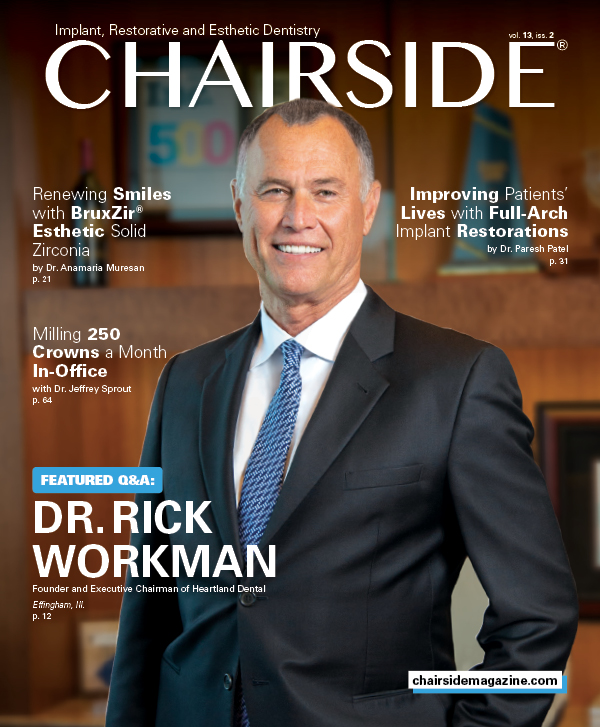Letters to the Editor: Questions for Our Implant Experts
We often receive questions from our readers seeking advice on the latest implant techniques, materials and treatment protocols. Here, two of our most frequent contributors, Drs. Jack Hahn and Paresh Patel, address questions related to placing cover screws on immediately placed implants, and the basic parameters for ridge reduction in full-arch cases.
Hi Dr. Hahn,
I really appreciated your article “Extraction with Immediate Implant Placement in Full-Arch Indications” (Chairside® magazine, Vol. 12, Issue 3). I was hoping you’d be able to answer a question I have related to the case featured in your article. After implant placement, you put cover screws on the upper implants and used healing abutments for the lower implants — and you did not immediately load either arch. Do you have any advice regarding this? In the past, I have lost immediate implants under maxillary dentures.
Thank you once again.
Best,
Omar Osman, DDS
Miami, Florida
Hi Dr. Osman,
Thank you for your question.
It depends on whether I think function can be controlled, as well as the quality of the bone and the degree of primary stability. In the maxillary case example in the article, I could have placed temporary abutments and a fixed provisional, as the initial stability of the implants was excellent. However, the patient told me that he used to grind his teeth, which was how they got in such bad shape. Thus, the patient’s history suggested that immediate loading of the implants was contraindicated, so I opted to place cover screws. When I deliver an immediate denture, I relieve the contacts of the denture on the ridge where the implants are placed and make sure that the support is in the palate. I place a resilient liner in the palate of the denture and have the patient close in centric relation for 10 minutes while the lining material is setting. Because the patient is still sleepy, my assistant sits with the patient and holds their mouth closed.
I hope that I have answered your questions.
Best regards,
Jack A. Hahn, DDS
Hi Dr. Patel,
I’ve read several of your articles on full-arch implant treatment featured in publications like Chairside, Inclusive™ magazine and Dentistry Today®. I have found the surgical techniques you illustrate to be quite helpful. However, I spend a lot of time considering how much ridge reduction to perform in my full-arch cases, particularly for the maxillary arch — do you have any pointers you might share?
With thanks,
Anonymous
Hi Doctor,
Thanks for your question and for the kind words. As your experience suggests, determining how much alveoplasty to perform when preparing to place implants for full-arch cases is not always simple. It’s certainly one of the most common questions I get at my courses. When determining how much bone reduction to perform in the maxilla, the primary considerations include: (1) an esthetic assessment of the patient from a facial perspective; (2) an intraoral evaluation; and (3) radiographic diagnosis.
For the facial evaluation, observe the patient’s tooth and gingival display with a relaxed smile as well as with a full, animated smile. For edentulous patients, assess how much of the ridge shows with and without the patient’s current prosthesis. This assessment can inform how much bone to remove and how that will affect the final esthetic outcome. For example, if desired by the patient, you may have the opportunity to address a “gummy” smile. Generally, if the transition line is visible with the patient in a full smile, the bone needs to be leveled 3 mm beyond that, taking care to leave enough bone to support adequate width and height for the implants as well as the soft tissue. Three other factors to account for during this facial evaluation are the incisal edge positions of the maxillary centrals, facial and lip support, and the vertical dimension of occlusion.
Next, assess how much intraoral space is available intraorally and radiographically. During this evaluation, determine the true ridge height after accounting for inclination, undercuts and concavities. Of course, it’s important to look out for hard- and soft-tissue defects, which can ultimately affect how much ridge height and width you have to work with.
An advantage of the BruxZir® Full-Arch Implant Prosthesis is that we only need 10 mm of vertical space, which requires less bone reduction in many cases.
I hope this helps.
Kind regards,
Paresh B. Patel, DDS


